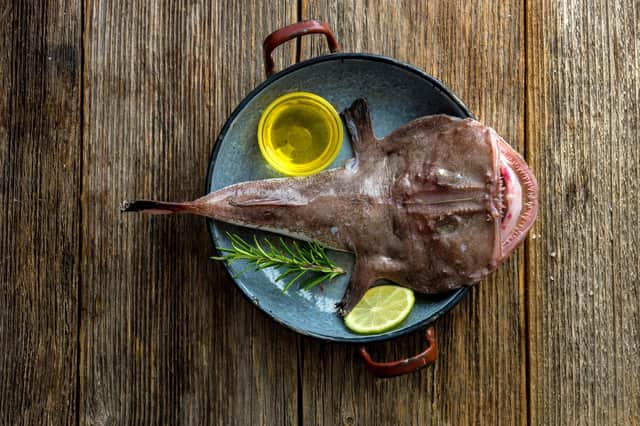Seafood festival focuses on 'ugly but tasty fish - this is what's on the menu


The focus will be on monkfish, gurnard and spider crab when at the festival is held at Weymouth Peninsula on Saturday September 10 and Sunday September 11.
The festival works closely with the Blue Marine Foundation (Blue Marine) to ensure there is a focus on restoring the ocean to health and to support local, low impact fisheries.
Advertisement
Hide AdAdvertisement
Hide AdOutcasts this year might not be the most pretty of fish, but they’re delicious and hugely underrated when it comes to what we see on menus across the country. SEAFEAST is asking visitors to give these undesirables another chance and be won over by the flavour.
Monkfish: Is the perfect example of why you shouldn’t judge a book by its cover! Monkfish is a particularly strange looking fish but is a fine-dining favourite. It has smooth, dark brown or olive green skin.
It can change the colour of its body to blend with the colours of the environment. Monkfish have a huge head and a gradually tapering tail. Its wide mouth is filled with a large number of curved, backward oriented teeth.
With firm, meaty, white flesh that comes from the tail section of the fish. It’s low in fat, with a luxurious, sweet flavour that’s quite similar to langoustine or lobster. Monkfish are a type of angler fish, with a growth like a fishing lure that protrudes from their heads and dangles above their enormous mouths.
Advertisement
Hide AdAdvertisement
Hide AdThe decoy tempts prey towards needle-like teeth, distracting them just long enough for the monkfish to pounce. UK Sea Fisheries Statistics from 2020 show that total UK landings of monkfish have been around 20,000 tonnes with a value of £55-60 million per annum over the past 5 years. Monkfish is usually available all year round and effective management has led to very healthy stocks in south western waters.
Gurnard: Gurnard are slightly prehistoric looking and are also known as ‘sea robins’ which is due to their large pectoral fins. Gurnard has a large armoured head with a steep forehead and big eyes. A key characteristic is their individual spiny fin rays on each side of the body, which act as 'fingers' in searching for food on the seafloor. For years they were thrown back at sea or used as bait, but the popularity of this delicious fish is on the rise. Gurnard are considered a sustainable choice as long as not caught in their breeding season - May - July.
Spider crab: Around 85 percent of spider crab caught in the UK is exported to Spain where it is more popular. Spider crabs are large, spiky crustaceans that are common around Dorset’s coast.
Spider crabs have long spindly legs like a spider and a distinctive spiny shell. Their orange oval shells are often covered in algae, giving them a green hairy look! They grow up to 80cm in claw span. Caught by inshore fishermen using pots or nets which have a low impact on the seabed, these are a good sustainable choice and are in season from April to June.
Advertisement
Hide AdAdvertisement
Hide Ad